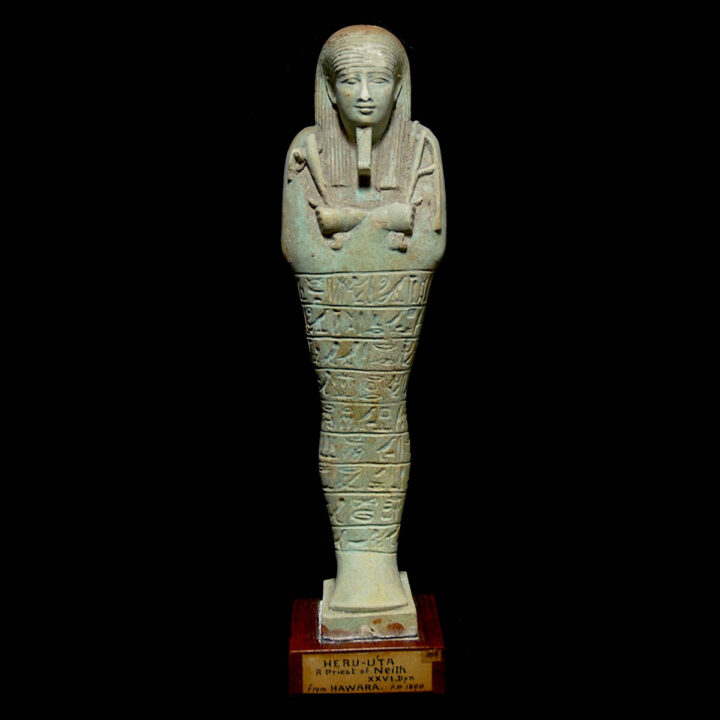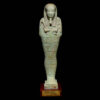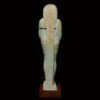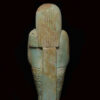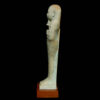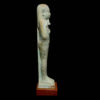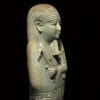Faience Shabti of the Neith-Priest Horudja
Culture: Egyptian
Period: Late period, 30th dynasty, 380-343 B.C.
Material: Faience
Dimensions: 23.2 cm high
Price: Sold
Ref: 1447
Provenance: Found by Flinders Petrie 1888 in Hawara. Thence English private collection early 20th century with the collection number 388. Last in a French private estate. Accompanied by a French antiquities passport.
Condition: One minor wear on the wig above the forehead, as well as on the hoe and the nose. Overall wonderfully perserved.
Description: Very large and in high-quality worked out faience shabti of Horudja, a priest of the goddess Neith from the 30th dynasty. The tomb of Horudja was found in 1888 by the English archaeologist Flinders Petrie in Hawara, at the entrance to the Faiyum oasis. He found 399 shabtis between two niches, many were damaged by floodings of the tombs. But several, like the present example, remained almost intact and depict the fine art of an excellent shabti maker. The figure in mummiform with arms crossed in front of the chest, with protruding hands from the mummy cover. In the left hand the figure holds the hoe, in the right one the hand plow and the braided cord for the seed bag at the back. The shabti stands on a plinth and leans on a back pillar. The face is graceful, the ears protruding from the tripartite wig. Below the chin a long, braided false beard, rolled in at the bottom. Right below the hands the diligently engraved inscription starts. It mentions as the owner Horudja, priest of Neith, son of Shedet, followed by the 6th chapter of the Book of the Dead. 58 shabtis of Horudja are today in the Manchester Museum in England. The Art Institute Chicago also owns one under Ref. No. 1890.30, another one with the object number 2005.025.001 is in the Michael C. Carlos Museum in Atlanta, USA. For one in a private collection see the shabti with Sotheby’s on 6 July 2021, lot 127. On an old wood base of early 20th century with the inscription “HERU-UJA. A Priest of Neith. XXVI Dyn [note: incorrect] From HAWARA. F.P. 1890.”



